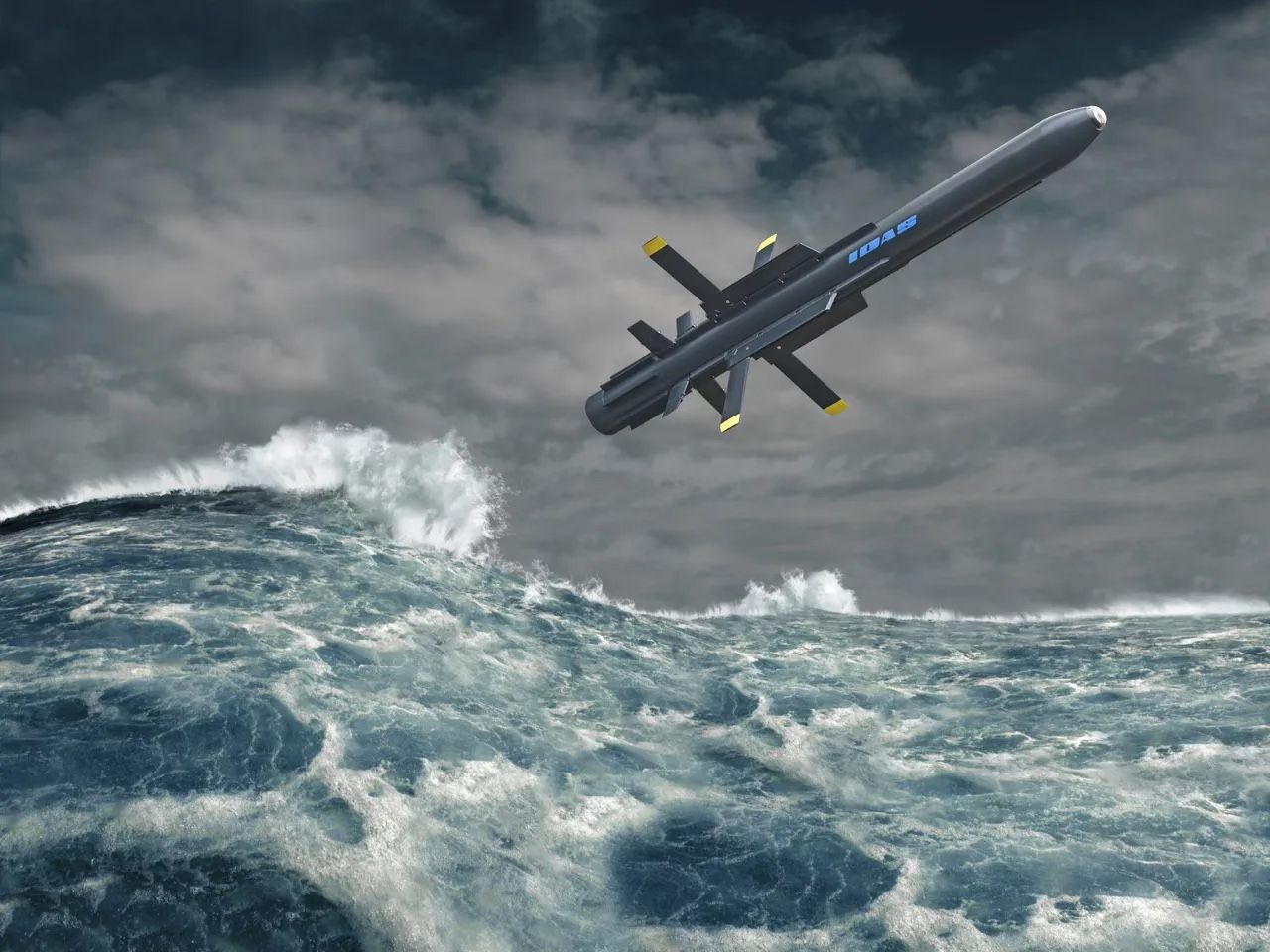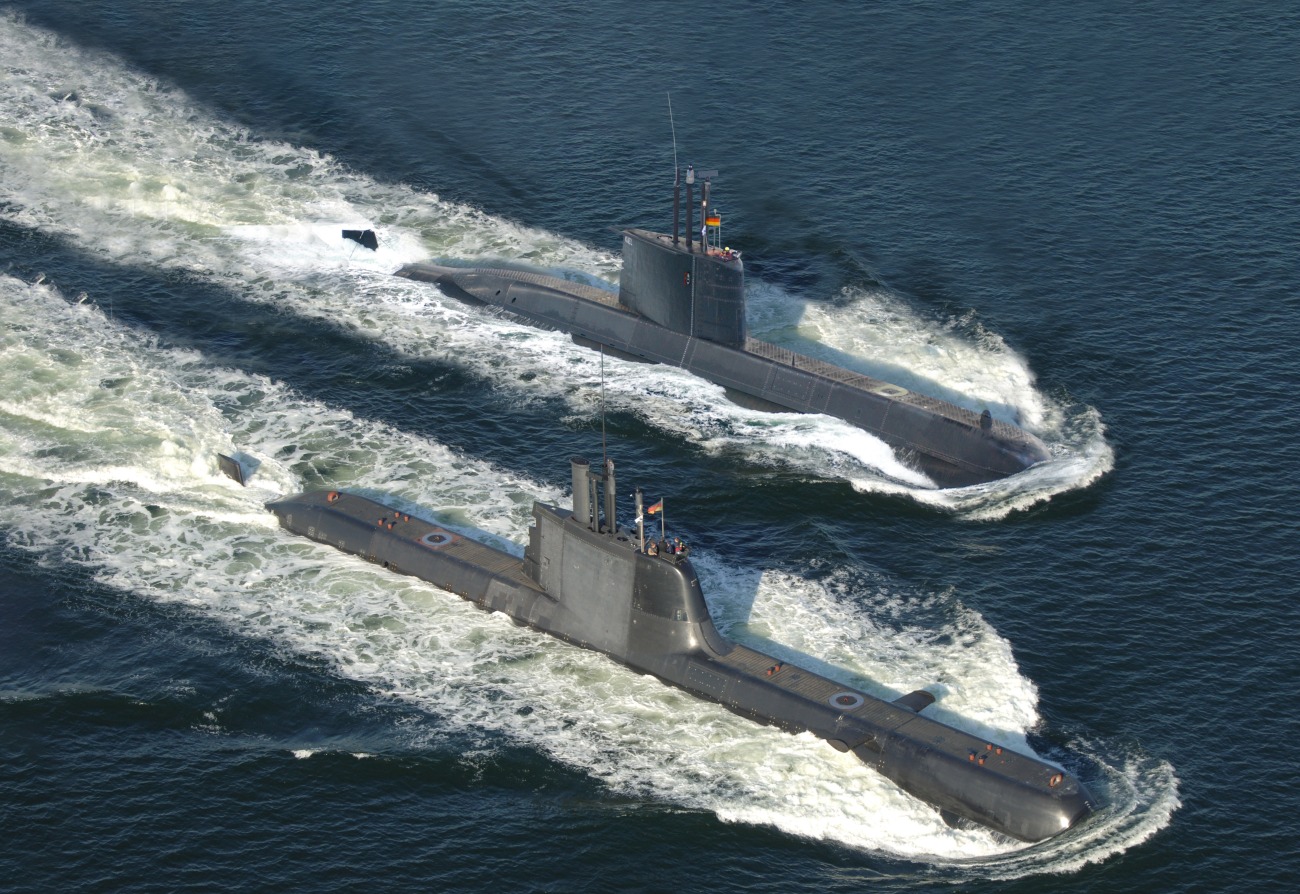German TKMS, Diehl Work On Revolutionary “Underwater Missiles”; Will India Get Game Changing Tech For Its Submarines?

German manufacturer TKMS (Thyssenkrupp Marine Systems), in collaboration with Diehl Defence, is developing an Interactive Defense and Attack System (IDAS) for submarines. The system will allow submarines to hunt down aerial threats while remaining submerged.
Late last year, the German Federal Ministry of the Interior’s Procurement Office (BAAINBw) signed the contract to develop a guided missile system for submarine active self-defense. TKMS announced on January 22 that it has been commissioned by the Bundeswehr to develop the advanced air defense system ‘IDAS.’
A press release by TKMS noted that both companies are pooling their expertise in the IDAS Consortium for the project. Oliver Burkhard, CEO of TKMS, said: “We are delighted that this innovation project can now be launched. At Thyssenkrupp Marine Systems, we are contributing to a completely new capability in the field of submarine self-defense while at the same time strengthening the safety of people and materials in challenging future deployment scenarios.”
TKMS has been working with Diehl Defence in the IDAS Consortium to develop IDAS for about 20 years. Diehl Defence is in charge of the missile technology, which is partially based on IRIS-T manufactured by it, while TKMS is in charge of the onboard system and submarine integration with an ejection container.
The system will allow submarines to engage aerial threats like helicopters equipped with lightweight torpedoes for anti-submarine warfare (ASW) without surfacing. This is revolutionary because at the heart of submarine operations is the ability to lurk deep inside the oceans without being detected.
Currently, submarines use periscopes and other sensors to identify aerial threats, but their only defense against ASW helicopters or aircraft is to surface and shoot down the threat using a Man Portable Air Defense System (MANPADS). That, however, gives away the submarine coordinates, making it vulnerable to further attacks by a hostile force.
Moreover, TKMS states that stealth is no longer enough to thwart aerial attacks because modern navies worldwide now use sonar-equipped, torpedo-carrying helicopters, which can quickly track and destroy a submarine. The company stresses that a submarine needs its own air defense to defend itself against these evolving aerial threats.
“ASW helicopters are probably submarines’ worst enemy,” Peter Hauschildt, Head of Research and Technology at TKMS, told Naval News in December 2024. “While a submarine can relatively easily evade or hit a frigate, a helicopter’s agility makes it impossible for a submarine to react on time to save itself,” he added.
According to a Maritime Executive report, the work on the system began in 2000, and the first successful test launch took place in 2006. Originally, the system was supposed to be operational by 2014 and retrofitted onto existing subs.
The German parliament approved a US$5 billion financing package in December 2024 to construct four new Type 212CD submarines for the German Navy, and US$26 million was added to the package to complete the development of IDAS, which will now debut on the 212CD.
How Does The IDAS Work?
According to the TKMS, the two core features of the IDAS are – the capability to fire a missile from a submerged submarine and to control and steer the missile interactively during its flight. To achieve this, an optical fiber is used to keep the data connection between the submarine and guided missile intact throughout the flight.
Once the submarine detects an attacking helicopter using a sonar, target data appears on the operator’s tactical console.
After this, the guided missile is hydraulically expelled from the torpedo tube. Underwater, the missile moves toward the target after its motor has ignited at a safe distance from the submarine. By this time, it is possible to alter the course to engage the target from behind or from the side. The guided missile breaks the water surface and reaches cruising altitude with the help of a booster, with its wings unfolded for flight control.
Then comes the homing phase, during which the guided missile travels at its maximum speed toward the predetermined probable target area.

“Throughout the entire mission, the system communicates graphical views of the environment perceived by the guided missile’s seeker and information on the targets to the operator in the submerged submarine via optical fiber. This enables the operator to intervene at all times if need be, and to change or correct the operational target designation or to abort the mission at any point in time,” states TKMS. Towards the end, the target is engaged by initiating the warhead and its fragmentation effect.
In a standoff between an ASW helicopter and a submarine, the fiber optic link is essential because it offers the vital advantage of high data transfer, which enables video to be sent from the missile to the console. This means that after the missile is in the air, IDAS will keep sending information to the operator, who may then adjust the flight parameters, confirm the target, and control the missile until the final phase of the missile.
India Is A TKMS Client, Can It Get The IDAS?
According to reports, several countries have already expressed interest in the system. In fact, the recently published press release said that this globally unique technology will be available to customers of TKMS and Diehl Defence and will revolutionize the protection of submarines and their crews.
Based on this assertion, this technology might also be made available to India, which has recently finalized TKMS and Mazagaon Dock Shipbuilders Limited (MDL) for its ‘much anticipated’ Project-75I contract. The other key contender for the contest, Larsen & Toubro, in partnership with Spain’s Navantia, did not clear the evaluation.
The Indian Navy has been looking to build six submarines under Project 75I. The latest development means that the state-owned Mazagaon Dockyards Limited, along with its partner ThyssenKrupp Marine Systems (TkMS) of Germany, would be the only vendor left in the race for making the six submarines.
TKMS has offered India a new submarine based on its Type 214. This submarine would be tailored to the Indian Navy’s specifications and will include the newest AIP technology, a lithium-ion battery, and exceptional stealth characteristics. Additionally, the TKMS submarine will feature an advanced sensor and combat system.

Christian Frühling, the TKMS Program Head for Project-75I said, “In this, our big advantage is our unique AIP solution. The submarine design is a derivative of the well-established HDW Class 214 submarine, which is currently in service with several navies worldwide. It will be tailored to the Indian Navy’s requirements and incorporate technological advancements. To summarise our Project-75I design: it is proven, it is advanced, and it is for India.”
Oliver Burkhard, the CEO of TkMS, previously stated that if the company wins the contract to manufacture six new diesel-electric submarines for the Indian Navy, it would like to work with its partner, the state-owned Mazagon Dock Shipbuilders (MDL), to build submarines and other naval vessels in India for export.
Against this backdrop, it may not be too far-fetched to imagine that India might also acquire the IDAS, especially as it gears to combat the twin threat posed by Pakistan and China in the Indian Ocean Region.
However, it is safe to say that this revolutionary technology will be a force multiplier for the Indian submarine fleet.
- Questions and Answers
- Opinion
- Motivational and Inspiring Story
- Technology
- Live and Let live
- Focus
- Geopolitics
- Military-Arms/Equipment
- Segurança
- Economy
- Beasts of Nations
- Machine Tools-The “Mother Industry”
- Art
- Causes
- Crafts
- Dance
- Drinks
- Film/Movie
- Fitness
- Food
- Jogos
- Gardening
- Health
- Início
- Literature
- Music
- Networking
- Outro
- Party
- Religion
- Shopping
- Sports
- Theater
- Health and Wellness
- News
- Culture

